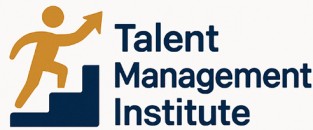The role of behavioral assessments in talent management
Behavioral Assessments as a Core Component of Talent Management
In today's competitive workforce, understanding the key factors that drive a person's natural tendencies is crucial for effective talent management. Behavioral assessments provide a framework for predicting how individuals will behave in various work scenarios. By identifying personality traits and behavioral patterns, organizations can better align roles with an individual's strengths and expectations.
Assessments, especially predictive behavioral tests, focus on a range of personality aspects, including dominance, extraversion, patience, and formality. By delving into these factors, organizations learn how team members may react in specific job situations. Such insights from a predictive behavioral perspective can greatly enhance the alignment of individuals to roles within a team.
The implementation of behavioral assessments also aids in selecting adjectives that best describe the core personality attributes of assessment takers. This process, along with cognitive assessments, paints a comprehensive picture of a person's potential fit for a job. It also helps leaders to form cohesive teams, ensure optimal job performance, and support individual development initiatives.
Furthermore, by identifying adjectives that predictively correlate with successful behavior in particular roles, organizations can anticipate the personalities that will thrive and those that might require additional support.
For a more thorough understanding of integrating behavioral assessments and exploring their broader implications, consider exploring
the role of a human capital strategist in modern organizations.
How the pi behavioral assessment works
Mechanics of the PI Behavioral Assessment
The Predictive Index (PI) Behavioral Assessment is a tool designed to help organizations understand the natural tendencies and personality traits of their employees. It's fundamentally a personality test that assesses behavior through a series of questions requiring participants, or assessment takers, to choose adjectives that best describe them.
The PI Behavioral Assessment is structured around four key factors: dominance, extraversion, patience, and formality. These factors help in predicting how individuals can be expected to behave in a work environment. By selecting adjectives that resonate most closely with their self-perception, individuals are providing a window into their behavioral preferences and cognitive assessment.
This assessment is relatively quick, generally taking only a few minutes to complete. Participants select adjectives in a free choice manner, facilitating an environment where they can express their natural tendencies without pressure. The adjectives chosen offer valuable insights into how they see themselves in various scenarios.
Upon completion, participants receive a score highlighting their predilections in terms of dominance, extraversion, patience, and formality. These scores are pivotal in forming a comprehensive picture of their personality traits.
Organizations utilize this behavioral assessment to discern the underlying drivers of their team members. It serves as an instrument to help place the right people in the right roles, ensuring that individuals are aligned with the job requirements and cultural fit of the team. This alignment is crucial for fostering a cohesive and effective work environment.
The PI Behavioral Assessment, with its rich dataset of descriptors, powers predictive behavioral insights that support talent management decisions. It paves the way for informed decisions about recruitment, team dynamics, and the potential need for developing specific aptitudes in staff members.
To navigate the intricacies of behavior in the context of talent management, further insights can be explored
here.
Benefits of using the pi behavioral assessment
The Advantages of Employing the Predictive Behavioral Tool
Utilizing the PI behavioral assessment in talent management offers numerous benefits for organizations seeking to effectively understand and leverage the natural tendencies of their team members. This tool aids in selecting the right fit for a particular role, ensuring that individuals' personality traits align with job requirements, ultimately fostering a harmonious work environment.
One of the primary advantages is the assessment's ability to offer insights into an individual’s profile within a matter of minutes. By analyzing specific behavioral factors such as dominance, extraversion, patience, and formality, this personality test helps predict how people are likely to behave in a given professional setting.
Additionally, the assessment provides a detailed report, allowing hiring managers to craft better interview questions. These questions are designed to evaluate key factors, such as how a candidate's behavioral patterns might interact with team dynamics or align with organizational goals. This becomes invaluable when considering how assessment takers' fits will help you drive a more cohesive and productive team while minimizing potential conflicts.
Through the selection of adjectives that describe an individual's natural behavior, companies can better forecast work performance, teamwork capabilities, and leadership potential. For instance, identifying personality traits such as a strong drive or the ability to exercise patience can significantly influence team success and overall work efficiency.
Moreover, integrating this type of behavioral assessment into your organization contributes to a more data-driven talent management approach. It enables leaders to make informed decisions that go beyond mere cognitive assessment results and delve into more subtle personality aspects.
For more in-depth insights on how to align your talent strategy with these principles, you can explore the
talent management analysis provided by industry specialists.
Integrating the pi behavioral assessment into your organization
Effectively Implementing the PI Behavioral Assessment
Integrating a behavioral assessment like the PI Behavioral Assessment into your organization can revolutionize the way you manage talent. This tool provides insights that go beyond traditional cognitive assessments. Here’s a breakdown of how you can seamlessly incorporate this method into your talent management processes:
- Understanding the Tool: Before bringing the PI Behavioral Assessment to your organization, it’s essential that leadership and team members understand what the tool measures. It evaluates personality traits through factors such as dominance, extraversion, patience, and formality. These factors help predict how individuals may behave in certain job roles and what their natural tendencies might be.
- Training for Implementation: To ensure effective use of the PI Behavioral Assessment, training is critical. Team leads and HR professionals should be well-versed in how to administer the test, interpret scores, and integrate findings into hiring and team formation processes. Training sessions can be arranged to address how to use this tool as part of the broader behavioral assessment strategy.
- Align with Organizational Goals: The use of behavioral and cognitive assessments should align with the company's strategic objectives. Define how this assessment can contribute to wider talent development goals, such as identifying high-potential individuals or building more effective teams.
- Customize the Experience: Allow assessment takers free choice to select adjectives that best describe their personality traits. This approach not only provides a predictive behavioral profile but also fosters a sense of personalization and involvement.
- Integrate with Hiring and Development: Use behavioral assessments during the hiring process to predict which candidates are more likely to thrive in specific roles. Similarly, understanding the extraversion-patience balance in team members can guide professional development and teamwork efforts.
- Monitor and Adapt: Continually assess the impact of integrating the PI Behavioral Assessment. Collect feedback from teams and adjust the implementation strategy as necessary to ensure that it meets evolving organizational requirements.
Incorporating the PI Behavioral Assessment into your organization is a strategic move that can enhance your approach to talent management. By understanding the key factors such as personality traits and mapping these to job roles, organizations can make informed decisions that contribute to overall success. Keep in mind that tools like this need to be part of a cohesive strategy that considers the broad spectrum of employee motivation and engagement.
Case studies: Success stories with the pi behavioral assessment
Real-World Applications and Outcomes
The Predictive Index (PI) behavioral assessment has been instrumental for various organizations, demonstrating its effectiveness in streamlining talent management processes. By leveraging this tool, companies have not only refined their recruitment strategies but also enhanced team dynamics and individual performance.
One notable outcome of using the PI behavioral assessment is its ability to foster better team composition. By understanding personality traits through key factors such as dominance, extraversion, patience, and formality, organizations can assemble teams with complementary skills and natural tendencies. This results in a more cohesive work environment where team members feel motivated and engaged.
Moreover, businesses employing the PI assessment often report a significant reduction in turnover rates. The assessment helps identify job candidates whose behavioral traits align with the role requirements, ensuring a better fit. It delves into how individuals expect to behave in various scenarios, which aids in predicting their success in a specific position. Consequently, this decreases the likelihood of mismatched hires who may otherwise have left the company prematurely.
Through the application of the PI behavioral assessment, organizations have successfully identified leaders within their ranks who might not have initially stood out. The assessment's focus on factors such as cognitive assessment and behavioral tendencies provides insight into an individual’s capacity to drive teams towards achieving common goals. This has been particularly beneficial in nurturing talent from within, enabling internal promotions and development opportunities.
The PI assessment also supports managers in addressing team challenges. By understanding the personality test scores and adjectives that describe each team member, managers can tailor their leadership style to meet the unique needs of their team. Examples of such personalized management include striking the right balance between patience and urgency, or knowing when to adopt a more dominance-led approach.
In summary, case studies across various industries underscore the PI behavioral assessment as a transformative tool in talent management. It has proven to not only enhance recruitment and team functionality but also elevate overall organizational performance.
Challenges and considerations in using the pi behavioral assessment
Addressing Challenges in Implementing the PI Behavioral Assessment
Implementing the PI Behavioral Assessment for talent management can present several challenges, even as it offers numerous benefits. Recognizing these challenges allows for a more strategic application of the tool, ultimately enabling organizations to enhance team dynamics and optimize talent management.
Firstly, one potential challenge is the integration of this assessment into existing HR processes. Organizations must evaluate how the assessment's predictive factors align with their current talent management strategies. This may involve adapting roles and job descriptions to better incorporate the insights derived from the predictive behavioral factors and natural tendencies identified by the assessment.
Furthermore, the methodology behind the assessment, which often involves specific questions about dominance, patience, and extraversion, can be perceived as complex by assessment takers. Clear communication about what to expect and how the assessment will be used can help alleviate any concerns, ensuring team members see it as a valuable tool rather than just another personality test.
A common challenge involves selecting and interpreting the appropriate adjectives to describe job-related behaviors accurately. The free choice nature of choosing adjectives might seem daunting for some. Guidance on how these adjectives relate to personality traits and job expectations can help clarify the process.
Moreover, there is the consideration of time management. Although the assessment is designed to be completed in minutes, complete understanding and analysis require a commitment to integrate its findings into decision-making and personnel development properly.
Lastly, it is crucial to be mindful of potential biases that may arise if the assessment is not used appropriately. Recognizing the limitations of any behavioral assessment, organizations must ensure that scores and insights are used as one of several tools rather than definitive judgments. This balanced approach ensures that assessments contribute positively without unfairly impacting decisions about people's capabilities or potential roles.
In conclusion, while the PI Behavioral Assessment offers significant advantages, acknowledging and addressing these challenges is essential. Proper integration of its findings alongside other cognitive assessments and HR strategies can help organizations leverage these tools to foster an effective and dynamic work environment.














